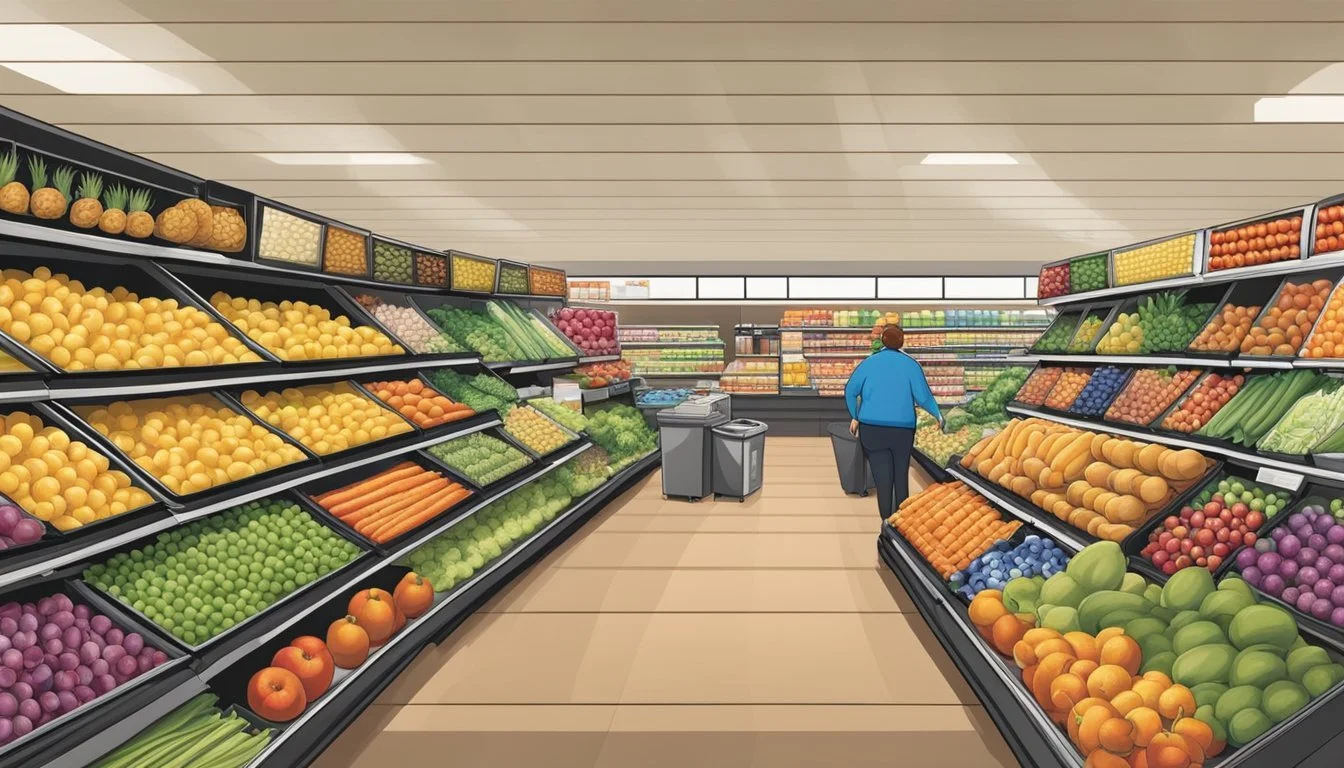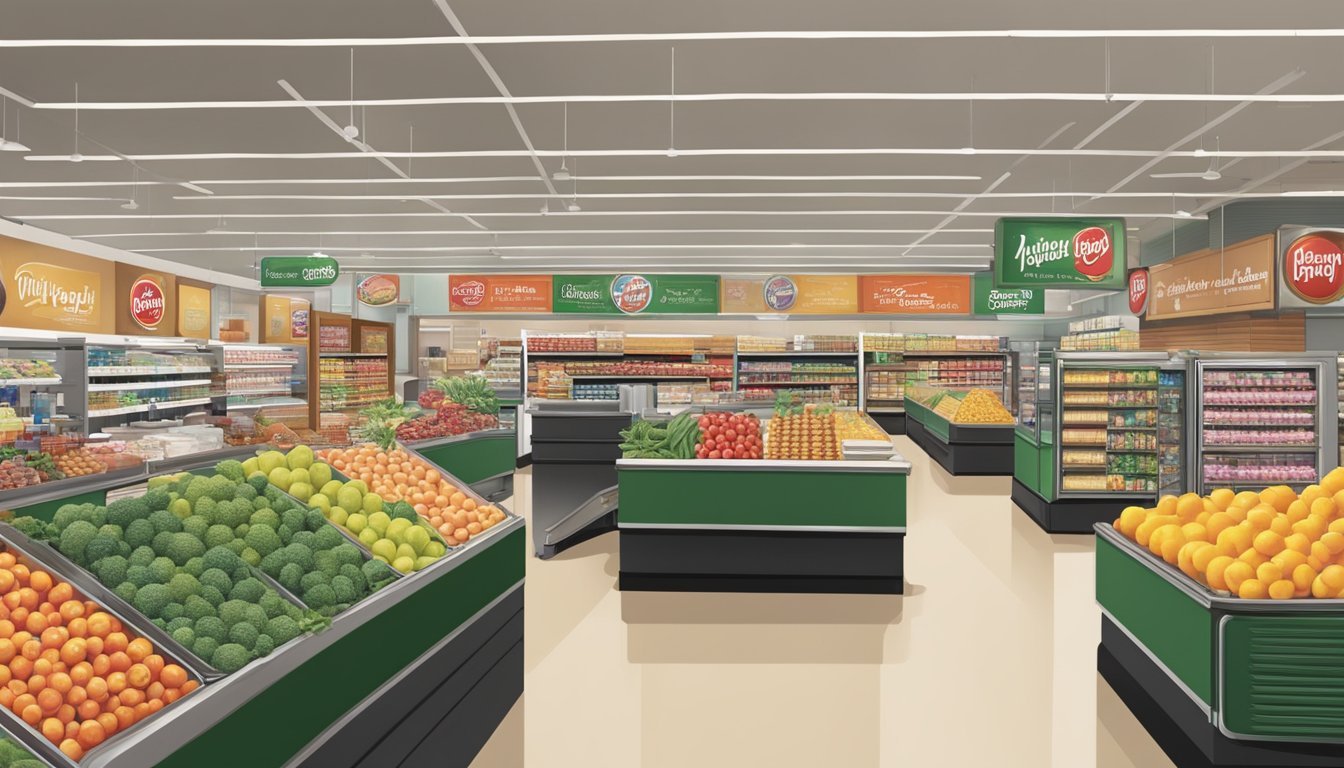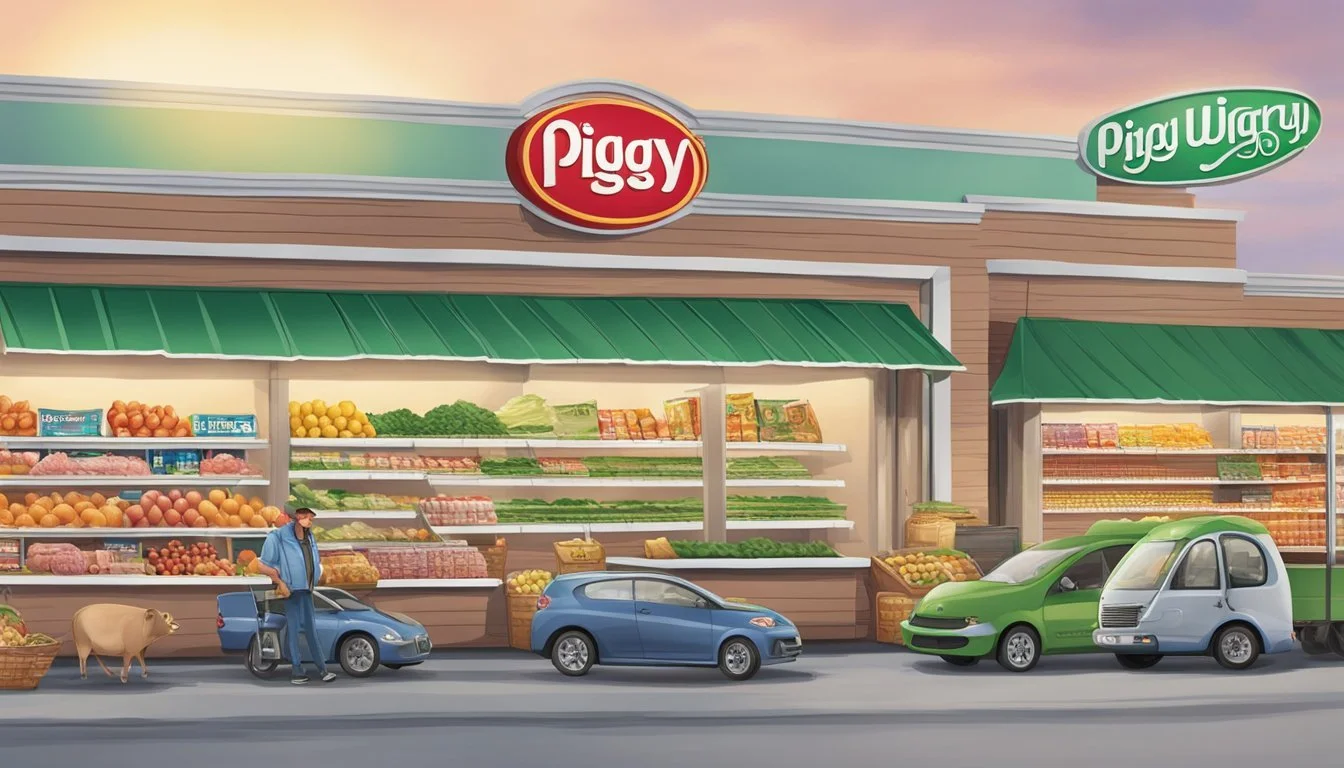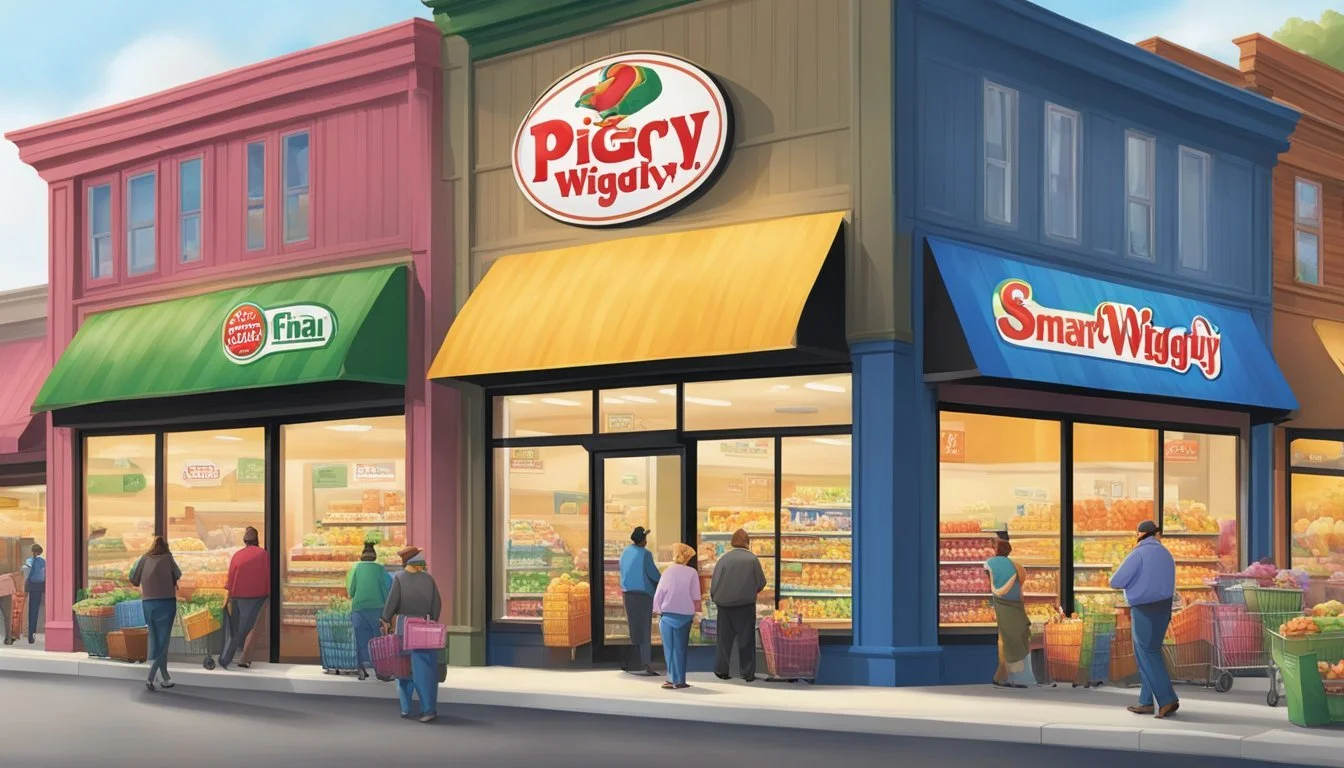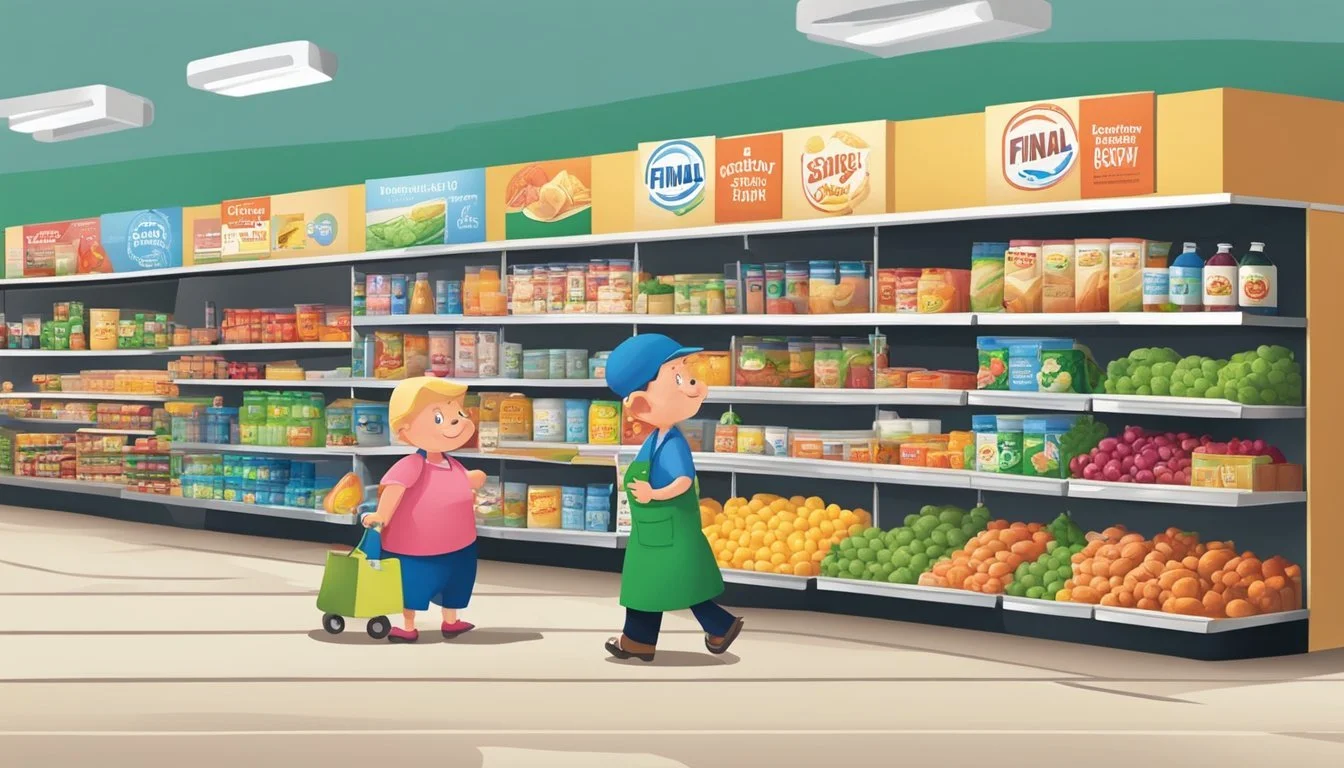Piggly Wiggly vs Smart & Final
A Comprehensive Comparison of Prices, Selection, and Service
Piggly Wiggly and Smart & Final stand out as distinct grocery chains in the competitive retail landscape. Each store offers unique features that cater to different shopper preferences and needs.
Piggly Wiggly, known for pioneering the self-service grocery concept, continues to provide a traditional shopping experience with a focus on fresh produce and meats. Smart & Final, on the other hand, positions itself as a hybrid warehouse and grocery store, offering bulk items alongside regular groceries.
The choice between Piggly Wiggly and Smart & Final largely depends on individual shopping habits, with Piggly Wiggly appealing to those seeking a neighborhood grocery feel and Smart & Final attracting customers looking for bulk purchases and competitive pricing. Both stores have carved out their own niches in the market, making the comparison a matter of personal preference rather than a clear-cut superiority.
Historical Background of Grocery Retailers
Grocery retail has undergone significant transformations since the early 20th century. Piggly Wiggly, founded by Clarence Saunders in 1916, revolutionized the industry by introducing the self-service concept.
Saunders opened the first Piggly Wiggly store in Memphis, Tennessee. This innovative approach allowed customers to select their own items, drastically changing the shopping experience.
Prior to Piggly Wiggly, grocery stores relied on clerks to gather items for customers. The self-service model reduced labor costs and increased efficiency, leading to lower prices for consumers.
Piggly Wiggly's success led to rapid expansion through franchising. By 1932, the chain had grown to over 2,660 stores across the United States.
Smart & Final, established in 1871, predates Piggly Wiggly by several decades. Originally a supplier for wagons and farms, it evolved into a grocery wholesaler and retailer.
The rise of supermarket chains in the mid-20th century further transformed the grocery landscape. These larger stores offered a wider variety of products under one roof.
Saunders continued to innovate, developing the Keedoozle automated store concept in the 1930s. Though unsuccessful, it demonstrated his ongoing commitment to retail innovation.
Today, both Piggly Wiggly and Smart & Final continue to operate, adapting to changing consumer preferences and technological advancements in the competitive grocery industry.
Comparative Analysis of Store Profiles
Piggly Wiggly and Smart & Final have distinct profiles that shape their market positions and customer experiences. Their contrasting approaches to store locations, layouts, and product offerings reflect different strategies in the competitive grocery industry.
Market Presence and Locations
Piggly Wiggly maintains a strong presence in the South, particularly in Alabama. The chain focuses on smaller communities and rural areas, with stores often serving as local neighborhood markets. This regional concentration allows Piggly Wiggly to tailor its offerings to local tastes and preferences.
Smart & Final, in contrast, has a broader geographical footprint. The company operates stores in urban and suburban areas across the western United States. Smart & Final's locations are typically larger and designed to serve both individual consumers and small businesses.
Store Layout and Design
Piggly Wiggly stores feature a traditional supermarket layout. Aisles are arranged in a grid pattern, with produce sections near the entrance and dairy products along the back wall. The stores maintain a familiar, no-frills atmosphere that appeals to their core customer base.
Smart & Final employs a warehouse-style design in many of its locations. Wide aisles accommodate bulk purchases, and the layout emphasizes efficiency for shoppers buying in larger quantities. The stores often have higher ceilings and industrial lighting, creating a more utilitarian shopping environment.
Product Variety and Selection
Piggly Wiggly offers a standard range of grocery items, with an emphasis on regional favorites and store brands. The produce section features locally sourced fruits and vegetables when possible. Meat departments in Piggly Wiggly stores are known for their quality and custom cuts.
Smart & Final provides a broader product selection, catering to both household and business needs. The stores stock an extensive range of bulk items, including large packages of meat and oversized produce. Smart & Final also carries a wide variety of foodservice products, kitchen equipment, and janitorial supplies not typically found in traditional supermarkets.
Price Comparison and Budget-Friendliness
Piggly Wiggly and Smart & Final offer distinct approaches to pricing and budget-friendly shopping. Each store employs unique strategies to attract cost-conscious consumers while maintaining product quality.
Affordability across Product Lines
Piggly Wiggly focuses on competitive pricing for everyday essentials. Their smaller store format allows for reduced overhead costs, potentially translating to lower prices on staple items. Smart & Final, with its larger footprint, leverages economies of scale to offer competitive prices on bulk purchases.
Smart & Final's pricing on meat tends to be higher, with a gallon of milk costing $3.79. Piggly Wiggly often features locally-sourced options, which can impact pricing variability. Both stores strive to maintain a balance between affordability and quality across their product lines.
Private label brands play a significant role in both stores' pricing strategies. These house brands typically offer lower price points compared to national brands, providing budget-conscious shoppers with cost-effective alternatives.
Promotions and Savings Opportunities
Piggly Wiggly implements a mix of traditional and digital coupons to enhance savings. Their loyalty programs often include personalized discounts based on shopping history. Smart & Final emphasizes bulk-buying discounts, catering to both individual consumers and small businesses.
Weekly sales circulars remain a key promotional tool for both retailers. Smart & Final frequently offers multi-buy deals on larger quantities, while Piggly Wiggly tends to focus on individual item discounts. Digital coupons have gained prominence in both stores, allowing customers to easily access savings through mobile apps or websites.
Seasonal promotions and holiday-specific deals are common in both chains. These time-limited offers can provide significant savings on popular items, encouraging increased foot traffic and basket sizes during peak shopping periods.
Quality of Goods Offered
Piggly Wiggly and Smart & Final both strive to provide quality products to their customers. Each store has its strengths in different departments, catering to various consumer preferences and needs.
Comparison of Fresh Produce Quality
Piggly Wiggly emphasizes locally-sourced produce when possible. This approach often results in fresher fruits and vegetables on their shelves. The store's smaller size allows for more frequent restocking, reducing the time produce spends in storage.
Smart & Final, on the other hand, offers a wider variety of produce due to its larger format. Their bulk buying power enables them to source from a broader range of suppliers. This can lead to competitive pricing on staple items.
Both stores maintain strict quality control measures. However, Piggly Wiggly's focus on local sourcing may give them an edge in seasonal produce freshness.
Meat and Bakery Department Evaluation
Piggly Wiggly's meat department is known for its personalized service. Butchers are often available to provide custom cuts and advice. The store's bakery typically offers a selection of fresh-baked goods daily.
Smart & Final's meat department features both pre-packaged and fresh-cut options. Their larger scale allows for a more extensive selection of cuts and varieties. The bakery section in Smart & Final stores varies, with some locations offering fresh-baked items and others focusing on packaged goods.
Quality in both stores is generally consistent, with Piggly Wiggly potentially having an advantage in personalized service and Smart & Final in variety.
Organic and Health-Conscious Selections
Smart & Final has expanded its organic and health-focused offerings in recent years. They now stock a range of organic produce, grains, and packaged goods. The store also carries various alternative products for those with dietary restrictions.
Piggly Wiggly's organic selection can be more limited, especially in smaller locations. However, they often feature local organic products when available. Some Piggly Wiggly stores have dedicated health food sections, but the extent varies by location.
Both chains recognize the growing demand for organic and health-conscious options. Smart & Final generally offers a broader selection in this category, while Piggly Wiggly may have unique local organic items.
Shopping Experience and Customer Service
Piggly Wiggly and Smart & Final offer distinct shopping experiences, with each store's layout, checkout process, and customer service approach shaping how customers perceive their visits. The cleanliness, efficiency, and overall atmosphere play crucial roles in determining customer satisfaction at both chains.
Assessment of Checkout Efficiency
Piggly Wiggly typically features traditional checkout lanes with cashiers, while Smart & Final often incorporates self-checkout options alongside staffed registers. This difference can impact wait times and customer preferences.
Piggly Wiggly's checkout process tends to be more personalized, with cashiers often familiar with regular customers. This can lead to a friendlier, small-town feel.
Smart & Final's self-checkout options may appeal to customers who prefer speed and independence. However, during busy periods, lines can form at both self-checkout and staffed registers.
Both stores generally maintain an adequate number of open lanes during peak hours to manage customer flow efficiently.
Store Cleanliness and Environment
Piggly Wiggly stores often have a more traditional grocery store layout, with narrower aisles and a cozy atmosphere. The cleanliness standards can vary between locations, as many Piggly Wiggly stores are independently owned and operated.
Smart & Final stores typically feature wider aisles and a more warehouse-like environment. This open layout can make navigation easier for customers, especially those purchasing in bulk.
Both chains strive to maintain clean stores, but the perception of cleanliness may be influenced by the store's age and design. Smart & Final's newer stores often appear more modern and streamlined.
Lighting and signage also play a role in the shopping experience. Piggly Wiggly stores may have a more eclectic feel, while Smart & Final aims for a consistent, bright environment across locations.
Customer Service and Satisfaction
Piggly Wiggly's customer service often reflects its community-oriented approach. Employees may know regular customers by name, creating a personalized shopping experience.
Smart & Final's customer service focuses on efficiency and product knowledge, particularly for bulk and business customers. Staff are typically trained to assist with large orders and provide information on commercial products.
Both stores offer loyalty programs, but their approaches differ. Piggly Wiggly's programs may vary by location, while Smart & Final offers a more standardized rewards system across its chain.
Customer satisfaction at both stores is influenced by product availability, price competitiveness, and the helpfulness of staff. Piggly Wiggly often excels in creating a familiar, hometown atmosphere, while Smart & Final's strength lies in its diverse product range and bulk-buying options.
Technology and Convenience Features
Piggly Wiggly pioneered self-service grocery shopping in 1916, revolutionizing the industry. This innovation allowed customers to select their own items, reducing labor costs and increasing efficiency.
Smart & Final has embraced modern technology to enhance the shopping experience. They offer a mobile app for digital coupons, shopping lists, and store locator services.
Both chains provide self-checkout options in many locations, catering to customers who prefer a quick, autonomous experience.
Smart & Final's larger stores often feature more advanced inventory management systems. These help maintain stock levels and ensure product availability.
Piggly Wiggly stores, while generally smaller, focus on personalized service. Some locations offer online ordering and curbside pickup for added convenience.
Neither chain has fully automated stores like Amazon Go, but both continue to adapt to changing consumer preferences. Smart & Final's warehouse-style format allows for bulk purchases, appealing to both households and small businesses.
Piggly Wiggly maintains a balance between modern conveniences and traditional grocery shopping. Their stores often reflect local tastes and preferences, fostering a sense of community.
Both retailers strive for competitive pricing, with Smart & Final leveraging its bulk-buying model to offer deals on larger quantities. Piggly Wiggly frequently uses loyalty programs and weekly specials to attract cost-conscious shoppers.
Brand and Product Loyalty Factors
Brand loyalty and product offerings play a crucial role in grocery store preferences. Exclusive store brands and prepared foods can create strong customer attachments, while evolving consumer trends shape purchasing decisions.
Exclusive Brands and Store-Prepared Foods
Piggly Wiggly offers a limited selection of store-brand products focused on value. These items cater to budget-conscious shoppers seeking affordable alternatives to national brands. Smart & Final, on the other hand, provides a wider range of private-label options across various categories.
Smart & Final's First Street brand covers numerous product lines, from pantry staples to fresh produce. This extensive store-brand portfolio allows customers to find consistent quality and value throughout the store.
In terms of prepared foods, Piggly Wiggly typically offers basic deli options. Smart & Final emphasizes its foodservice roots with a more extensive selection of ready-to-eat meals and bulk prepared items, appealing to both individual consumers and small businesses.
Consumer Preferences and Trends
Modern shoppers increasingly prioritize health-conscious and sustainable products. Smart & Final has responded by expanding its organic and natural offerings, including the Sun Harvest brand. This aligns with growing consumer demand for cleaner labels and environmentally friendly options.
Piggly Wiggly stores, particularly in the South, maintain strong customer loyalty through their community-focused approach. Many locations are independently owned, allowing for tailored product selections that cater to local tastes and preferences.
Both chains face competition from online grocery services. Smart & Final has invested in e-commerce capabilities, offering delivery and pickup options. Piggly Wiggly's online presence varies by location, potentially impacting tech-savvy consumers' shopping choices.
Consumer Reports surveys indicate that product quality and value remain top factors in grocery store selection. Smart & Final's bulk-sizing options appeal to value-seekers, while Piggly Wiggly's regional focus resonates with customers who prioritize supporting local businesses.
Position in the Competitive Market
Piggly Wiggly and Smart & Final occupy distinct niches in the grocery retail landscape. Their positioning strategies and competitive advantages shape their market presence against larger chains and wholesale distributors.
Comparison with Other Grocery Retailers
Piggly Wiggly operates primarily through a franchise model, allowing local owners to tailor stores to community needs. This approach gives Piggly Wiggly flexibility in smaller markets where large chains may not venture. Smart & Final, conversely, focuses on a warehouse-style format that appeals to both households and small businesses.
In comparison to giants like Walmart, Kroger, and Publix, both Piggly Wiggly and Smart & Final have smaller footprints. However, they maintain loyal customer bases through specialized offerings. Piggly Wiggly stores in the South and Midwest have shown resilience against encroaching competitors, partly due to their cost-plus concept and community ties.
Smart & Final's hybrid model sets it apart from traditional supermarkets and wholesale clubs like Costco and Sam's Club. It offers bulk items without membership fees, attracting price-conscious shoppers and small business owners.
Impact of Wholesale Distributors
Wholesale distributors play a crucial role in the competitive positioning of both Piggly Wiggly and Smart & Final. C&S Wholesale Grocers supplies many Piggly Wiggly locations, enabling the stores to compete on price with larger chains. This partnership helps Piggly Wiggly maintain competitive pricing despite its smaller scale.
Smart & Final's business model inherently incorporates aspects of wholesale distribution. By offering bulk items directly to consumers and businesses, they effectively cut out middlemen in certain product categories. This strategy allows them to offer competitive prices on large-quantity purchases.
Both retailers face challenges from the increasing presence of discount chains like Aldi and Lidl. These competitors pressure traditional grocery stores to innovate and adapt their pricing strategies to retain market share.
Consumer Perception and Ratings
Consumer perception plays a crucial role in evaluating grocery stores. While specific ratings for Piggly Wiggly and Smart & Final are limited in the provided search results, we can draw some insights from available information.
Smart & Final has been included in Consumer Reports' Grocery Stores & Supermarkets test program. This suggests that the chain has undergone evaluation by a reputable consumer organization.
Piggly Wiggly, known for its historical innovation in self-service shopping, maintains a loyal customer base in certain regions. The store's focus on fresh produce and meats contributes to positive consumer sentiment.
Customer reviews often highlight the following factors when rating grocery stores:
Product quality and freshness
Price competitiveness
Store cleanliness and organization
Customer service
Variety of products offered
It's important to note that consumer perceptions can vary based on individual experiences and local store management. Regional differences may also influence how customers view these chains.
To get a more accurate picture of consumer perception, shoppers are encouraged to:
Read recent customer reviews
Visit local stores in person
Compare prices on frequently purchased items
Consider the store's product range in relation to personal needs
By considering these factors, consumers can make informed decisions about which grocery store best meets their needs.
Innovative Approaches and Future Developments
Piggly Wiggly and Smart & Final are embracing technology to enhance customer experiences. Both chains are exploring self-checkout systems and mobile apps for convenient shopping.
Piggly Wiggly, building on its legacy of self-service innovation, is experimenting with smart shopping carts. These carts feature touch screens for navigation and automatic item scanning.
Smart & Final is focusing on data analytics to optimize inventory management. They're using predictive algorithms to anticipate demand and reduce waste.
Both stores are expanding their e-commerce capabilities. Piggly Wiggly is partnering with third-party delivery services in some locations. Smart & Final is developing its own delivery platform.
Sustainability initiatives are gaining traction. Piggly Wiggly is testing energy-efficient refrigeration systems. Smart & Final is piloting reusable packaging programs in select stores.
Artificial intelligence is entering the grocery sector. Smart & Final is exploring AI-powered chatbots for customer service. Piggly Wiggly is considering machine learning for personalized promotions.
The future may bring innovations like:
Augmented reality for product information display
Automated restocking systems
Cashier-less stores using computer vision
Voice-activated shopping assistants
These technologies could reshape the grocery shopping experience, blending convenience with personalization.

